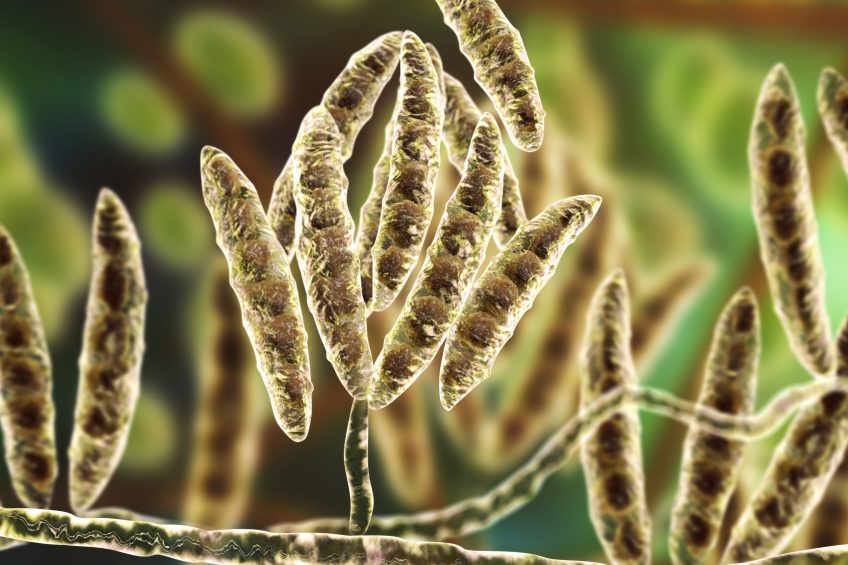Successfully confronting the fumonisin surge

While difficult to detect in pigs, fumonisins often pose a threat to pigs globally. Where binders fall short, a mitigation technique known as biotransformation offers a field-tested, proven solution.
Due to their gastrointestinal and immunosuppressive effects, fumonisins can seriously compromise swine performance. Fumonisin contamination in swine is difficult to detect mainly because it tends to occur at subclinical levels – necessitating measurement of the sphinganine/ sphingosine (Sa/So) ratio, a scientifically recognised biomarker for identifying fumonisin exposure in pigs. Multiple studies were conducted in recent years report the extreme sensitivity of swine to fumonisin contamination even at levels below the European guidelines of 5,000 parts per billion (ppb). Direct examples of the immunosuppressive effects of fumonisins in swine are the development of porcine pulmonary edema (PPE) and the decreased resistance to certain pathogens such as Pasteurella multocida.
Fumonisins and Pasteurella multocida
There is a link between fumonisins and increased susceptibility to P. multocida, a pathogen responsible for respiratory disorders, e.g. lung inflammation. A 2005 study highlighted how the sensitivity of piglets exposed to P. multocida increased exponentially in the presence of fumonisins. During the trial period, piglets exposed to the pathogen alone did not show significant symptoms such as lung lesions and decrease in weight gain. However, animals challenged with P. multocida in combination with dietary fumonisins at a concentration of 0.5 mg/kg BW displayed delayed growth, coughing and a higher cell count in the bronchoalveolar lavage fluid (BALF). An increase in the number of lymphocytes and macrophages was reported as well. Greater lung lesions in the form of subacute interstitial pneumonia were detected in the group that received both the fumonisins and the pathogen.
Figure 1 – Mycotoxins incidence in all grains worldwide, January to June 2017; global results.

Figure 2 – Mycotoxins incidence in corn worldwide, January to June 2017; global results.

Prevalent worldwide
Worldwide concentrations of fumonisins in 2017 have already reached average values that can affect animal production (see Table 1 and Figure 1). Maize and maize by-products such as dried distillers grains with solubles (DDGS) and corn gluten typically run a higher risk of fumonisins contamination. Average fumonisin levels in maize exceeded 2,500 ppb: a concentration that can significantly affect pigs (see Table 2 and Figure 2).
Solving fumonisins
Mycotoxin binders cannot sufficiently address fumonisin challenges in real-life settings. They involve a neutralisation process known as adsorption, adhering to toxins in order to limit their entrance into an animal’s bloodstream. However, mycotoxin binders have shown an extremely low binding capacity of fumonisins at pH 6 and pH 7 common in a pig’s gut.
Enzymatic biotransformation – the application of a purified enzyme to irreversibly biotransform fumonisins into non-toxic metabolites directly in an animal’s gastro-intestinal tract – is the most advanced and effective method to counter the negative effects of fumonisins. The Fumzyme enzyme in the Mycofix product line is the only commercially available purified enzyme proven to biotransform fumonisins safely and effectively.

Keep up to date on mycotoxins: This interactive tool provides information on the impact on livestock health, A-Z of mycotoxins, plus the regulations for mycotoxins per commodity per country.
Field trial results
A recent field trial on fattening pigs at a commercial farm in Argentina illustrates the effectiveness of a biotransformation strategy to combat fumonisins. The trial started in the fattening phase when piglets were moved into new houses and pens. In total, 1,484 piglets with an average age of 113 days (+/- 3 days) were separated in 2 houses (house 1 males, house 2 females). Each house was equipped with 2 separated feeding lines. Both houses and both lines within the house received a mashed diet according to the nutritional requirements of the animals in this period. One line per house received 1kg of the above mentioned mycotoxin strategy per tonne of feed additionally in the diet.
Piglets were randomly allocated to 2 compartments with 6 pens each. The animals were fed experimental diets containing maize naturally contaminated with fumonisins. The highest concentration of FUM detected was around 700 ppb (total FUMs). Application of product was 1kg of the mycotoxin approach per tonne of feed.
During the 6 weeks of trial all the measured parameters in the groups treated with the mycotoxin product improved significantly and the general impact of the treatment on production showed positive results (see Table 3). Supplement-fed groups saw favourable improvements in parameters such as the number of animals sold due to unfavourable conditions, FCR and kg produced per pig compared to the control groups.











